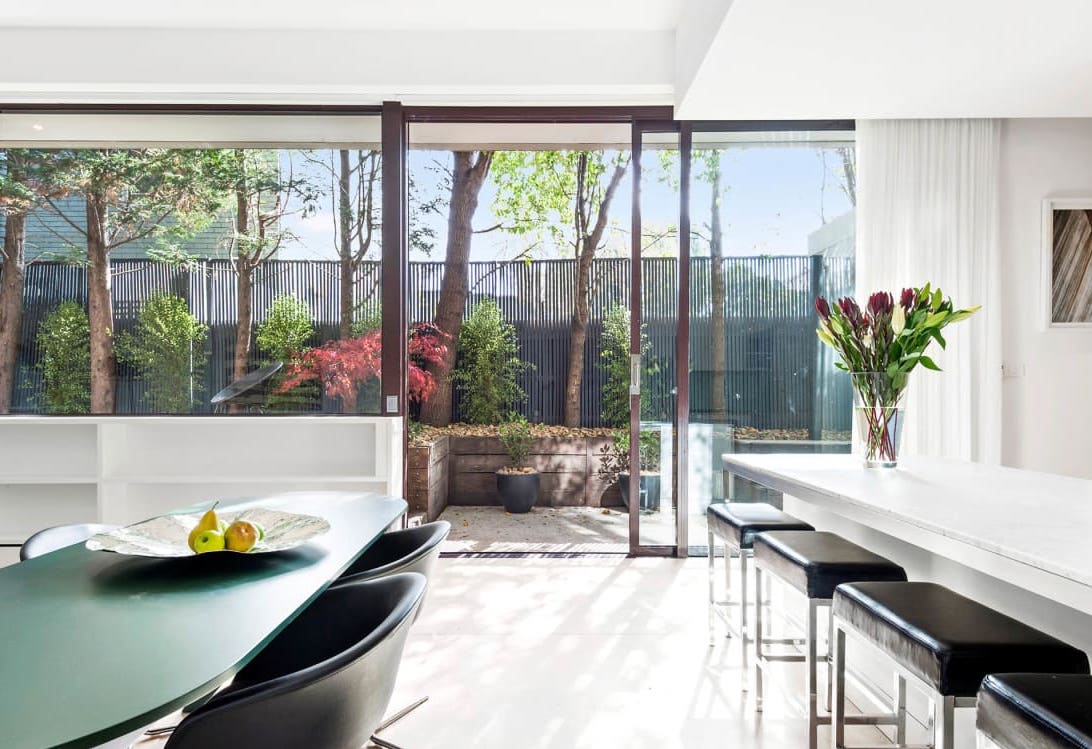As professional architects, we often see projects come to a halt or become stressful for our clients because of feuds with neighbours. I have also had firsthand experience with this, when a ‘stop work’ order was enforced on us during a personal construction project. Our neighbours panicked after seeing an enormous amount of scaffolding being erected, which of course made them wonder whether we were proposing to build something larger than approved. This took four weeks to reconcile, and resulted in no change to the planned development.
The best place to go to for advice about the law and regulations relating to building is through a local building surveyor or, if applicable, an architect or planning consultant. Planning consultants understand planning law, but a design professional will understand how to apply that law in a creative manner.
Here are some of the most common neighbourly problems I hear about as an architect assisting homeowners to design, build or renovate their homes. Read on to find out more about the laws to abide by in such situations, and some smart strategies for avoiding neighbourhood feuds.
Topics in this article:
Common neighbourly problems and smart strategies to resolve them
1. They can see into my house.
I’ve worked on a few projects where the homeowners were having issues with privacy. Often these cases involve a renovation or building project that will allow the one house to be looked into from an adjoining dwelling.
THE LAW: We are usually protected by local planning guidelines. In Victoria, these state that if a neighbour’s property is able to look into the house next door from less than nine metres away, certain measures need to be taken to ensure privacy. Each state has their own provisions, so it’s imperative to seek advice from a local professional (building surveyor, architect or planning consultant) on what regulations apply to your site.
SOLUTION: If a new build or renovation looks like it’s going to break this particular regulation, the best thing to do is find an innovative solution that allows light to fill your rooms while providing a measure of privacy.
If you’re working with a new window, etched glass can be installed, as seen in the below photo, combined with softening bamboo foliage. This window demonstrates how beautifully a window can be frosted to add privacy without enclosing a space.
Alternatively, one of the most cost-effective ways to ensure privacy is to use window film. Film is readily available in different patterns and can be applied easily by a professional. If you have a steady hand, you can even do it by yourself.
In the Kew House, a recent renovation project, the owners had many issues with privacy but also had a stunning view that we didn’t want to obstruct with film or screens. We addressed this by using frosted glass fins set on an angle, which met Regulation 419 of the Building Regulations 2006.
They prohibited the line of sight from the neighbour’s property, but were angled to allow access to the views in between.
2. Who owns the tree?
Another common problem brought to me by homeowners is when they’re not sure who ‘owns rights’ to a tree. This might be because a beautiful fruit tree on your boundary is overhanging the neighbour’s property – or vice versa – and needs to be cut back. Who is responsible for the cost?
THE LAW: You should always get legal advice if you have an issue with a tree on a boundary. But as a rule of thumb, you can cut back roots and overhanging branches to the boundary line. You do not need to let your neighbour know, but it makes sense to discuss this with them, especially if the tree is causing a problem. Find a landscaping professional to help with your makeover.
Also check with The National Trust to make sure there aren’t any tree preservation orders in place. They also have a list of trees that are of significance.
3. My neighbours are noisy.
Fighting couples, loud church-group meetings, barking dogs and terrible three-year-olds – we’ve heard it all at Houzz. If you’re experiencing problems with noisy neighbours, the first thing to do is to have a gentle and polite conversation with them or leave a note.
THE LAW: The Environment Protection (Residential Noise) Regulations 2008 sets out the laws and avenues of recourse for any unwanted noise, and how the noise levels can be tested.
SOLUTION: If you’re unable to protest the noise, consider ways of improving the acoustic performance of your own home. Double glazing is a great way of dampening noise transference, while also improving the thermal performance of your house.
Also look at eradicating draughts – which carry noise from under doors and window frames – by using appropriate seals. These are readily available from a hardware store.
4. Who’s fence is it anyway?
Normally, boundary fences are owned equally by both parties. It is therefore the responsibility of the party wishing to make a change to the fence to instigate the conversation about it.
Unfortunately, if your neighbour is not prepared to change a tired or ugly fence, you may be forced to replace the entire fence at your own cost.
THE LAW: You and your neighbour have equal responsibility for the dividing fence on your land. You should check with your local council whether you need any approvals, but in most cases you need to negotiate the changes to fencing details –including costs – directly with your neighbour. You can rely on processes set out in your state’s Fences Act to help you with your negotiations. The Act may differ slightly from state to state. View the Victorian Fences Act 1968, for an example.
SOLUTION: If the fence is causing you grief and you can’t get approval to replace it, consider covering it up. This project by Michelle Walker Architects incorporates tall bamboo behind a screen to blur the fence line.
Other suggestions include planting a vertical garden, painting the fence, installing cladding on your side of the fence, or installing some artwork. Be wary of loading too much weight on the existing fence though, as a horizontal fence works less efficiently than a vertical one.
If your neighbour agrees to let you build a new fence, you will need to pay the difference between a standard fence and what you propose to build. Make sure you agree on this with your neighbour. You may get a nice surprise if they want to contribute more for something special on their side too.
Be realistic with the materials you use for your fence. If you or your neighbours are planning on playing ball sports in your garden, working with espalier plants or just want more security, select a masonry wall with an appropriate finish.
5. The lines are blurred.
If your boundary line is blurred, you risk designing a building that doesn’t take full advantage of your property size or building envelope, as permitted by building regulations or local planning provisions (check with your local council). You also risk building over the boundary, which could result in the terrible misfortune of having to demolish.
The boundary line depicts not just the building envelope in the plan, but also the height of your proposal from Natural Ground Level. If you are pushing the limits for your proposal, fire-rated walls on boundaries, window distance from boundaries and daylight to habitable room windows are just a few boundary-related regulations that need to be considered.
THE LAW: It is important to engage a licensed land surveyor to determine the line of your boundary, as existing fences are often not on the boundary line. Your design professional will be able to recommend a land surveyor. Just check their qualifications and insurances, as with all professionals you deal with in the construction industry.
Once the true boundary has been established, you should discuss with your neighbour whether you keep the fence in the same location or realign to the true boundary line. If it has already been built on the true boundary line, the centreline of the posts would form the boundary, with palings and rails on one side. The paling side is usually determined by what was already there.
If the new fence is to be a wall, then the centreline of the wall will be the true boundary line. It is always best to read the Fences Act for more information.
If you’re building a new boundary wall, consider the material you use on the boundary. Masonry walls work well for fire protection as well as having good thermal mass and acoustic properties. Otherwise, check your options for acoustic insulation, double layers of acoustic grade plasterboard, and soft furnishing and finishes internally.
You can find proprietary systems for acoustic walls online, so do your research before selecting a boundary wall for a new project.
Nest Architects used the backdrop of a masonry wall on the boundary as a feature in their Holden Street project, pictured above.
This is just the tip of the iceberg when it comes to dealing with neighbours. As a professional, I have seen problems ranging from the straightforward to the absurd when it comes to property issues. My best advice; start by speaking to your neighbour if you have plans to change anything on your boundary, or if their lifestyle is having a negative impact on yours. If that doesn’t work, then seek the advice of an appropriate professional. Search for home design professionals in your area.
Have you faced challenges with your neighbours? Share your stories and how you dealt with them in the comments section.











My neighbour is refusing to allow me to put a standard 1950mm fence on our property boundary. He is insisting on 1500mm which is what is currently there and needs replacing. I have offered to pay for the difference in price between the 1500mm and the 1950mm options and he is still refusing to let me add the extra 45cm. His property is elevated to ours, so he has full visibility into our home, an extra 450mm would make all the difference to our privacy and he is refusing to let me pay for it and install it. He has threatened to speak to his solicitor if I do not agree to 1500mm. Am I being unreasonable?